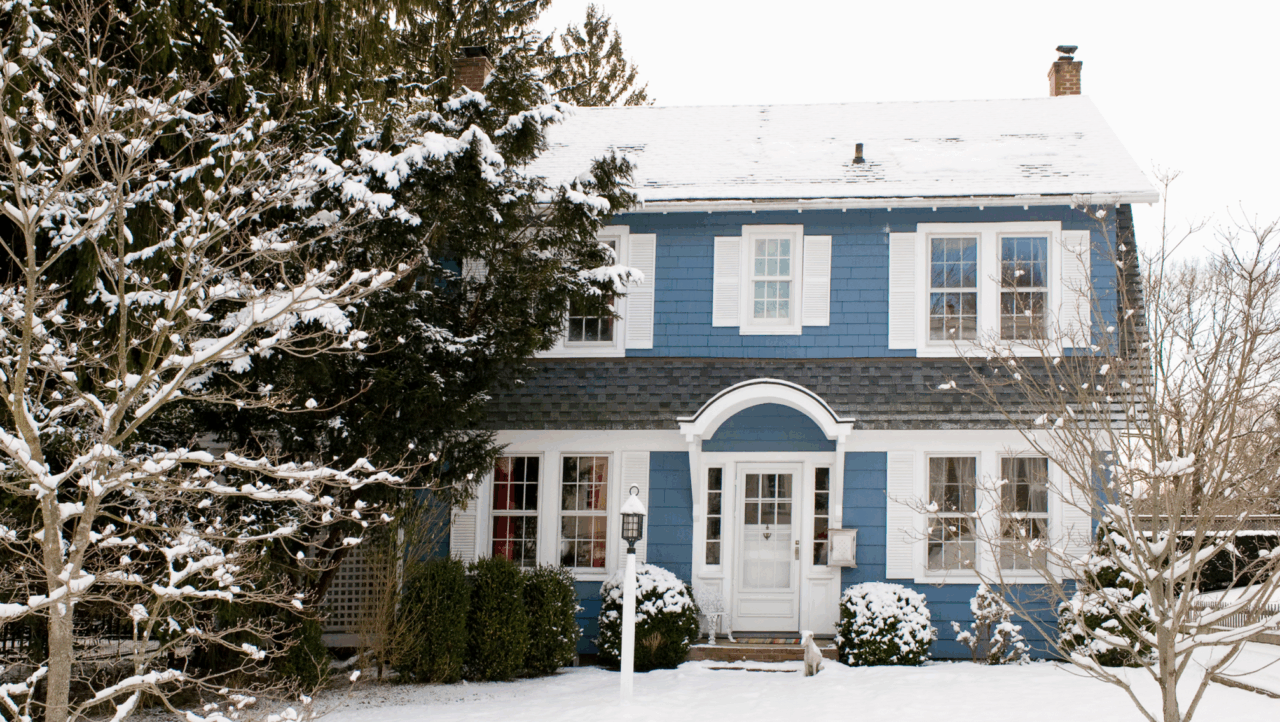10 US Cities Where Home Values Are Up — And 10 Where They’re Down
Nationally, buyers and sellers are on equal footing when it comes to home buying. The local picture, however, is a mixed bag as some cities are hot sellers markets while others are buyer-friendly.


Written by Susan Kelleher on December 1, 2025
Determining whether the housing market is favorable for buyers or sellers right now depends on where you live. In some places, the market continues to sizzle, with growing home values and stiff competition among buyers. In others, home prices remain flat or have even declined as homes sit on the market waiting for buyers.
Nationally, there are more homes for sale right now than there was at this time last year, and more motivated sellers. Price cuts are increasingly common as potential buyers save for down payments and keep a watchful eye on mortgage interest rates, which have edged down since September 2025. As the year comes to a close, sellers and buyers are rushing to transact before the holidays, and to take advantage of the dip in rates, says Zillow Senior Economist Kara Ng.
In some markets in the Northeast and California, a rebalancing has yet to happen, and competition remains pitched for buyers. In others — especially in southern metros — buyers have the edge.
If you’re home shopping or planning to buy soon, now’s a good time to check your finances so that you’re confident in your budget and can position yourself to get the best possible interest rate on a mortgage. With that in mind, here’s where things stand.
The national picture: More homes, more price cuts
The typical U.S. home value now sits at about $362,117, just a few hundred dollars more than a year ago. The flat value is due to more homes being listed for sale in 2025, and more homes lingering on the market this year as buyers continue to struggle with affordability.
The total number of homes for sale in October was nearly 13% higher than a year earlier, giving shoppers more choices than they’ve had in years. And those homes are staying on the market longer, typically 28 days from the day they were listed.
Meanwhile, Zillow data shows nearly 27% of U.S. sellers lowered their asking price in October. In some metros, more than a third of listings were discounted. Those with hefty price cuts included Indianapolis (38%), Raleigh and Salt Lake City (each at 37%), Denver (36%), Columbus (35%) and Phoenix (34%).
On the flip side, about 25% of homes sold above their list price in September, about 3.5% fewer than a year earlier.
Mortgage rates, which affect what buyers can afford, continued to edge lower, with the average rate for October hitting 6.25%. That’s just below September’s average of 6.35%. Barring a major economic event, Zillow economists expect rates to stay above 6% for the rest of the year. Given the current rates, the typical U.S. mortgage in October for a buyer who put down 20% on their home purchase was $1,778 — nearly 2% less than a year ago.
Metros where home prices have changed the most
Real estate markets can favor either sellers or buyers, or fall somewhere in the middle. Zillow's Market Heat Index shows buyers and sellers now have equal bargaining power on the national level. That rebalancing away from the dominant sellers market of the early 2020s is showing up in flat home prices.
Zillow’s forecast calls for home values to end 2025 where they started, meaning the typical U.S. home will not have appreciated this year. After remaining flat in December and January, annual home value growth is expected to rise to a peak of nearly 1.9% in August of 2026.
The national picture, however, obscures a more mixed local picture.
Locally, nine of the nation’s top 100 metros are strong sellers markets, while 32 markets favor buyers, according to the market heat index.
The strong sellers markets are:
- Rochester, NY
- Buffalo, NY
- Syracuse, NY
- Hartford, CT
- San Jose, CA
- San Francisco, CA
- Bridgeport, CT
- Albany, NY
- New York, NY
Buyers are calling the shots in:
- McAllen, TX
- Cape Coral, FL
- Miami, FL
- Jackson, MS
- Scranton, PA
- North Port, FL
- New Orleans, LA
- Austin, TX
- Deltona, FL
- Urban Honolulu, HI
- Jacksonville, FL
- Indianapolis, IN
- Knoxville, TN
- Palm Bay, FL
- Louisville, KY
- Wichita, KS
- Columbia, SC
- Tampa, FL
- Little Rock, AR
- Augusta, GA
- Winston, NC
- Atlanta, GA
- Charlotte, NC
- Omaha, NE
- San Antonio, TX
- Memphis, TN
- Nashville, TN
- Durham, NC
- Greenville, SC
- Houston, TX
- Detroit, MI
- Pittsburgh, PA
As for home values, here are the metros that gained and lost the most:
Top 10 metros* with the largest month-over-month increase (or smallest decline) in home values
| Metro | Typical home value as of October 31, 2025 | MoM % change in value |
| San Jose, CA | $1,572,103 | 0.42% |
| New York, NY | $709,052 | 0.38% |
| San Francisco, CA | $1,107,255 | 0.10% |
| Salt Lake City, UT | $560,475 | 0.07% |
| Los Angeles, CA | $949,365 | 0.04% |
| Providence, RI | $506,874 | 0.04% |
| Boston, MA | $721,320 | -0.01% |
| Riverside, CA | $580,718 | -0.02% |
| Chicago, IL | $338,938 | -0.02% |
| Washington, DC | $575,078 | -0.04% |
Top 10 metros* with the largest month-over-month decline in home values
| Metro | Typical home value as of October 31, 2025 | MoM % change in value |
| Austin, TX | $426,454 | -1.04% |
| Pittsburgh, PA | $221,717 | -0.91% |
| Dallas, TX | $362,053 | -0.67% |
| San Antonio, TX | $276,411 | -0.64% |
| Atlanta, GA | $378,785 | -0.58% |
| Las Vegas, NV | $429,719 | -0.56% |
| Raleigh, NC | $435,449 | -0.56% |
| Houston, TX | $305,280 | -0.54% |
| Columbus, OH | $322,398 | -0.52% |
| Buffalo, NY | $277,334 | -0.50% |
Top 10 metros* with the largest year-over-year rise in home values
| Metro | Typical home value as of October 31, 2025 | YoY% change in value |
| Cleveland, OH | $241,368 | 4.53% |
| Hartford, CT | $382,321 | 4.38% |
| Milwaukee, WI | $370,525 | 4.05% |
| Buffalo, NY | $277,334 | 3.74% |
| Chicago, IL | $338,938 | 3.70% |
| Detroit, MI | $260,188 | 3.40% |
| Louisville, KY | $270,566 | 3.19% |
| New York, NY | $709,052 | 3.09% |
| Cincinnati, OH | $298,945 | 2.92% |
| Philadelphia, PA | $377,765 | 2.70% |
Top 10 metros* with the largest year-over-year drop in home values
| Metro | Typical home value as of October 31, 2025 | YoY % change in value |
| Austin, TX | $426,454 | -6.10% |
| Tampa, FL | $356,298 | -6.09% |
| Miami, FL | $470,828 | -4.79% |
| Orlando, FL | $384,931 | -4.55% |
| Dallas, TX | $362,053 | -4.02% |
| Jacksonville, FL | $347,020 | -3.40% |
| Phoenix, AZ | $444,548 | -3.36% |
| San Antonio, TX | $276,411 | -2.97% |
| Atlanta, GA | $378,785 | -2.92% |
| Denver, CO | $566,597 | -2.92% |
Why are home prices going up/down in my neighborhood?
Local variations in home appreciation are due to a number of things that affect supply and buyer demand. They include:
1. Economic conditions and job opportunities. Metros with strong economic growth and a thriving job market tend to attract more people, leading to increased demand for housing and higher home values.
2. Infrastructure development and amenities. People are willing to pay a premium to live in metros with well-developed infrastructure, such as efficient transportation systems, quality schools, healthcare facilities, and recreational areas.
3. Demographic trends. Things like population growth, aging populations, and migration patterns can influence housing demand and, subsequently, home prices. Metros with significant population growth or younger demographics may experience higher rates of home value appreciation.
How can I prepare financially?
The first thing to do is determine your budget and make sure your credit score is in good shape. Paying bills on time every month, avoiding major purchases or opening new accounts, keeping your borrowing to less than 30% of your available credit, and making sure your credit report is free of errors can go a long way to boosting your score.
The BuyAbility℠ tool powered by Zillow Home Loans can help you see which homes you can afford based on your personal financial circumstances, including your credit score, and the latest mortgage interest rates.
Talk to your agent or lender about what local trends may mean for you
There is no one right time to buy for everyone.
Even sophisticated real estate investors find it difficult to time the market for the best deal, so experts recommend that you buy when you need to and when the time is right for you.
Your agent is your expert on local market conditions. They can help you shape an offer that takes rising or falling prices and other special things about your area into account when writing an offer or assessing whether a property is a good deal for you.
The trends described above can help you discuss with your agent whether you’re likely to pay more by waiting or whether buying now makes more sense.
*Based on nation’s 100 largest metros.
Tags
A local agent can help you stay competitive on a budget.
They’ll help you get an edge without stretching your finances.
Talk with a local agent


